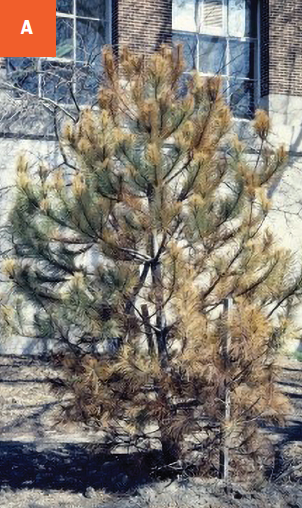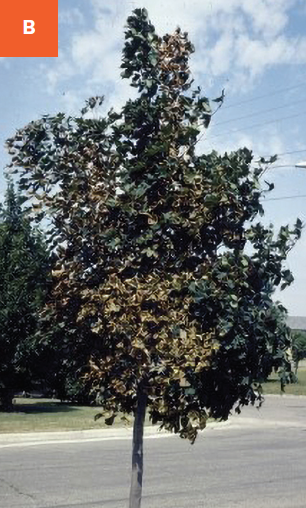Transplant Shock
DAMAGE/SYMPTOMS Leaf scorch, wilting, reduced leaf size, and chlorosis can all be attributed to the pressures that occur during transplanting. Delayed growth is common after recent planting.
OCCURRENCE Compromised roots are the primary cause of transplant shock. Tree roots are frequently damaged because of the way they were packaged for sale. In addition to the symptoms listed above, plants that are under stress from transplant shock are also more vulnerable to disease and insect infestations.
SUSCEPTIBILITY/TOLERANCE Transplant shock is common in newly installed trees. Balled and burlapped trees may have sustained a significant reduction of root mass, due to the excavation process. Bare root trees and containerized trees can also exhibit transplant issues.
MANAGEMENT Woody ornamentals can take up to five years to establish themselves in a new location depending on the size of the tree planted. Smaller stock is less susceptible to transplant shock. Watering properly is essential when trees are establishing. Regular watering for the first year is crucial. Pruning of newly planted trees should be limited to those limbs that are diseased, damaged or dead. Excessive pruning of newly planted trees will increase stress.
A Watering is essential when trees are establishing. B Compromised roots are the primary cause of transplant shock. C Transplant shock is common in newly installed trees.



